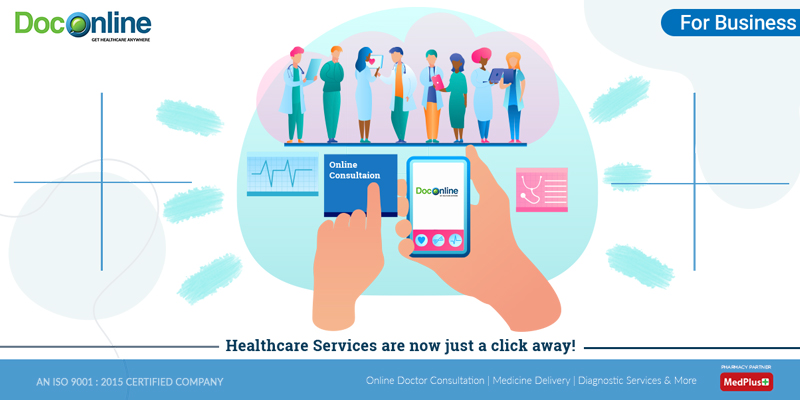Unlocking the Secrets of Subscription Based Healthcare for Better Patient Outcomes
Wiki Article
Understanding the Cost-Effectiveness of Subscription-Based Health Care Versions
As the health care landscape advances, subscription-based models arise as an engaging choice, assuring to redefine exactly how people manage medical costs. Evaluating these designs' cost-effectiveness demands a nuanced contrast with conventional insurance policy, taking into consideration both financial ramifications and person complete satisfaction. While they use openness and predictability in costs, questions stay concerning their ability to meet diverse health care demands, specifically for specialized treatments. The perspectives of health care providers even more complicate this formula, offering a multifaceted obstacle. What does the future hold for these versions, and can they truly supply on their guarantee of easily accessible, budget friendly treatment?Review of Subscription-Based Designs
Subscription-based health care models, occasionally described as direct medical care or attendant medication, are increasingly acquiring focus as a potential remedy to inefficiencies within typical medical care systems. These versions operate the principle of offering individuals straight accessibility to healthcare companies through a annual or monthly charge, bypassing the demand for standard insurance coverage mechanisms. This setup aims to streamline patient-provider communications by decreasing administrative problems, which typically hinder prompt and individualized care.At the core of subscription-based versions is the emphasis on an extra customized person experience. Individuals take advantage of improved accessibility to their doctors, often consisting of same-day or next-day visits, extended examination times, and straight communication networks such as phone or video clip phone calls. This version fosters a positive approach to health care, where providers and clients can collaboratively concentrate on preventative treatment and chronic illness monitoring.

Expense Contrast With Typical Insurance

One of the main monetary advantages of registration versions is openness in costs. Conversely, typical insurance policy may be much more advantageous for people needing specialized care or pricey therapies not covered under a membership model, as they profit from the wider coverage network and cost-sharing devices.
Nonetheless, cost-effectiveness is context-dependent. While membership models may offer financial savings for those mainly requiring primary treatment, individuals with chronic problems or specialized health care demands might locate traditional insurance policy more detailed. Examining details healthcare demands and possible use is important in establishing the most cost-effective alternative for people.
Effect On Client Contentment
Patient satisfaction within subscription-based healthcare versions usually mirrors a substantial enhancement over conventional insurance systems. Unlike typical systems, where individuals may visit this page experience delays in obtaining treatment, subscription-based designs ensure even more timely and straight interactions with healthcare providers.In addition, the openness in costs connected with subscription-based medical care minimizes the common frustrations connected to unforeseen fees and intricate invoicing procedures seen in standard insurance (subscription based healthcare). People appreciate knowing the precise financial dedication upfront, resulting in raised count on and self-confidence in their health care management
Furthermore, the emphasis on precautionary treatment and wellness in registration models adds to improved health and wellness outcomes, additionally enhancing individual satisfaction. By concentrating on recurring health and wellness upkeep instead of episodic treatment, patients experience a more constant and all natural healthcare journey.
In addition, the enhanced provider-patient connection cultivated in these versions, characterized by more time invested per person and customized interest, plays a crucial function in raising person satisfaction levels, as individuals really feel genuinely cared for and comprehended.
Carrier Experiences and perspectives
From the company's point of view, subscription-based medical care versions offer a transformative approach to providing medical services. These designs highlight a preventative and aggressive medical care approach, permitting service providers to focus on extensive client care without the restrictions of standard fee-for-service plans (subscription based healthcare). This shift in focus typically leads to enhanced individual results and enhanced company fulfillment, as medical care experts can allot even more time and sources to individual involvement and individualized care plansFurthermore, subscription versions assist in foreseeable profits streams, which improve financial security for doctor. This predictability permits improved source preparation and allotment, adding to an extra effective healthcare distribution system. Suppliers can purchase staff training, infrastructure, and modern technology enhancements, therefore improving the quality of treatment offered.
Nevertheless, the transition to subscription-based versions is not without challenges. Carriers should adjust to new functional structures, which can include substantial changes in payment practices and individual management systems. Furthermore, there is an integral requirement for durable data administration to track person outcomes and make sure top quality care. In spite of these difficulties, numerous suppliers find that the benefits of boosted patient interaction and structured procedures surpass the initial difficulties, making subscription-based versions an eye-catching option.
Future Potential Customers and Difficulties

A main difficulty is regulatory conformity, as registration designs must stick to progressing health care policies and insurance policy needs. This requires continuous adjustment and development to ensure placement with legal criteria. In addition, integrating these models into existing health care infrastructures can be complex, calling for considerable investments in technology and training.
There is additionally the possible danger of producing injustices in health care accessibility, as membership models may favor those that can afford them, leaving at risk populations underserved. Resolving this requires thoughtful factor to consider of rates methods and aid systems to ensure inclusivity.
Final Thought
Subscription-based healthcare designs offer a practical click this link choice to traditional insurance coverage by offering monetary predictability and openness, particularly benefiting people with persistent conditions or regular medical care needs. The cost-effectiveness of these designs rests upon specific healthcare usage patterns and scenarios. While they might enhance client contentment and streamline budgeting, difficulties stay in resolving specialized treatment needs. Future factors to consider include balancing detailed insurance coverage with affordability and integrating these designs within the wider health care system for optimum end results.Subscription-based healthcare models, in some cases referred to as direct primary treatment or attendant medication, are significantly getting interest as a prospective service to ineffectiveness within conventional healthcare systems. Unlike traditional systems, where people could experience hold-ups in getting care, subscription-based versions make certain even more prompt and direct interactions with healthcare providers.
These versions highlight a preventative and proactive medical care method, enabling providers to concentrate on detailed client treatment without the restrictions of conventional fee-for-service setups. As these designs continue to obtain traction, they offer the prospective to transform person accessibility to care, streamline solution delivery, and maximize health care investing.Subscription-based health care models provide a viable option to conventional insurance policy by providing economic predictability and transparency, specifically benefiting people with chronic problems or frequent health care needs.
Report this wiki page